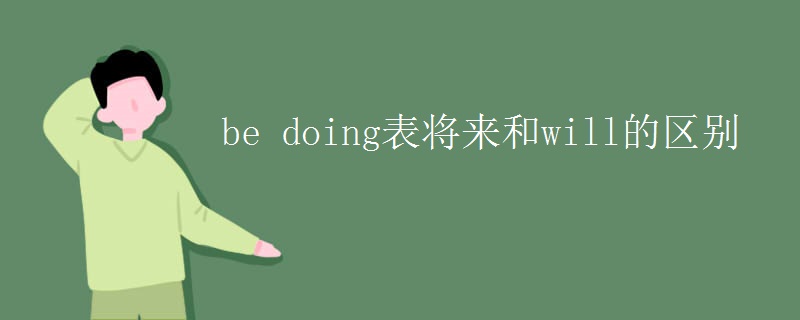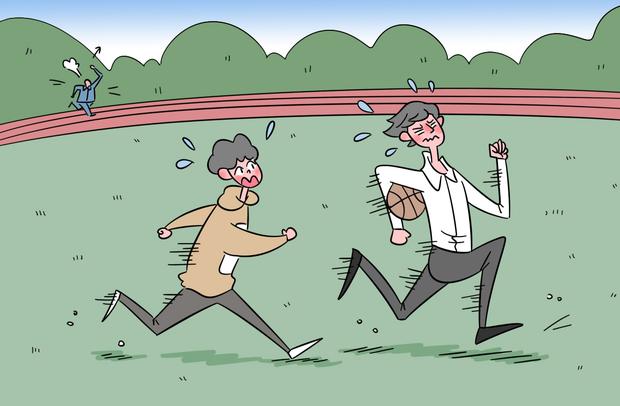be和do的区别与用法
2020-06-18 13:47:11文/叶丹现在进行时用be动词,结构:be动词+动词ing形式。一般将来时要用be动词,结构:be going to +动词原形。一般现在时、一般过去时变一般疑问句,因为没有be动词,所以要借助助动词提问。一般现在时借助助动词提问,主要看人称,如果是主语第三人称单数(he,she,it),用助动词does提问,其他人称主语用do提问。

英语的“be”是个特别动词;有些语言,如中文和马来文,并没有“be”这样的动词。
“Be”除了原形的“be”之外,还有另外七种形式:am, is, are, been, being, was, were.
在句子中,“be”可以是主动词(The Principal Verb)或助动词(The Auxiliary Verb).
当主动词时,“be”在性质上属于接系动词(The Linking Verb), 后面要有名词、形容词、地方副词或短语作补足语(The Complement)。例如:
1. The man is a science teacher.
2. Mary's new dresses are colourful.
3. I have been there before.
4. Mother is in the kitchen now.
这四个都是陈述句,可以变成疑问句,方法简单,把主语和“be”或助动词对换位置即可:
5. Is the man a science teacher?
6. Are Mary's new dresses colourful?
7. Have I been there before?
8. Is mother in the kitchen now?
当“be”要在祈使句中出现时,它必须借重助动词“do”或“don't”之助,如:
9.Don't be silly!
10. Do be obedient!
11. Don't be a fool!
“Be”有两种缩写法,如下:
12. He's not...../He isn't....
13. You're not...../You aren't...
但“am + not”的缩写法只有一个:
14. I'm not.
有人用“ain't”, 但这并不是标准英语。
 be popular for的用法
be popular for的用法be popular for 是表示“因...而受...
2020-10-18 would be是什么时态
would be是什么时态would be 的意思:愿意; 将,将要; 会,...
2020-07-18 There be句型表示什么
There be句型表示什么There be句型是英语中常用句型,意思是“有”...
2020-07-17 will和will be区别用法
will和will be区别用法will后面加原形动词(或不加任何词);will ...
2020-07-04 willbe是什么时态
willbe是什么时态will be表示一般将来时,will be do...
2020-07-04 may be和maybe的区别和用法
may be和maybe的区别和用法maybe是副词,意思是“也许、可能”,在句中作状...
2020-07-02 should be后面动词什么形式
should be后面动词什么形式should是虚拟语气词,而should be只是...
2020-07-17 should be done是什么时态
should be done是什么时态若表示与现在事实相反的假设,则条件从句中用过去式,...
2020-07-01 here be是就近原则吗
here be是就近原则吗是就近原则。be的形式是由与它最近的那个名词来确定...
2020-07-01 be动词后面加什么形容词还是副词
be动词后面加什么形容词还是副词be动词(am,is,are)一般情况下是加形容词...
2020-06-20 be sure和make sure区别
be sure和make sure区别be sure指某人对某事或对某种情况有把握,常译...
2020-06-20 be seen后面跟什么
be seen后面跟什么see sb. do/doing sth。be s...
2020-06-20 be fond of和like区别
be fond of和like区别be fond of(=like very muc...
2020-06-20 be doing是什么时态
be doing是什么时态当be变化为现在分词时(is,am,are),be...
2020-06-20 be doing表将来和will的区别
be doing表将来和will的区别be doing表示近期、眼下就要发生的事情;wi...
2020-06-20
点击查看 高中英语语法 更多内容









